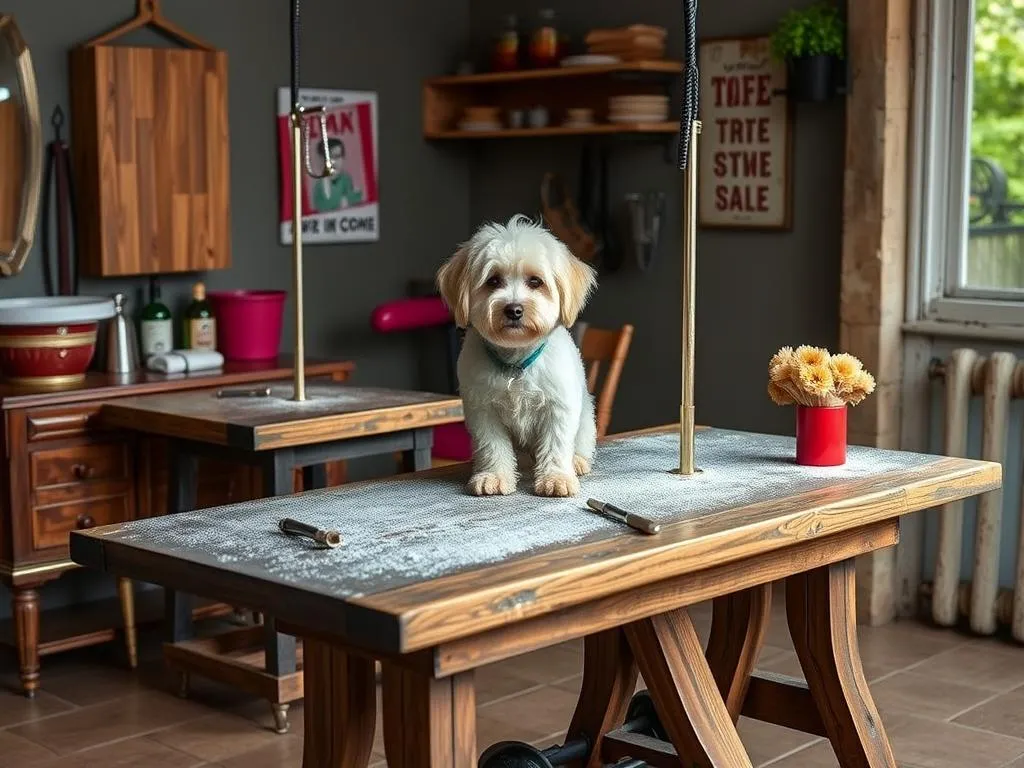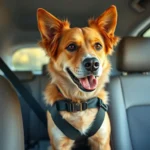
Grooming your dog is not just a matter of aesthetics; it’s an essential part of pet care that contributes to their overall health and well-being. Regular grooming helps to remove dirt, debris, and loose hair, while also allowing you to check for skin issues or parasites. However, visiting a professional groomer can be costly and time-consuming. This is where DIY dog grooming tables come into play, offering a cost-effective and convenient solution for pet owners who wish to groom their dogs at home.
Having a grooming table at home not only ensures safety and convenience but also significantly enhances the grooming results. A dedicated space equipped with the right tools allows for thorough grooming, making the process more enjoyable for both you and your furry friend.
Understanding the Need for a Dog Grooming Table
Benefits of a Grooming Table
Investing in a DIY dog grooming table can greatly improve your grooming experience. Here are some of the key benefits:
- Improved posture and ergonomics: Grooming your dog on the floor can lead to back and knee strain. A grooming table provides a comfortable height that reduces physical stress on the groomer.
- Enhanced safety: Grooming tables are designed to keep dogs secure, minimizing the risk of accidents. They offer a stable surface where dogs can be positioned safely during grooming.
- Better accessibility: A grooming table allows for easier access to different parts of the dog’s body, enabling thorough grooming and better visibility.
Common Grooming Challenges Without a Table
Without a proper grooming table, you may face multiple challenges:
- Difficulty managing active dogs: When grooming on the floor, dogs may be more prone to squirming or escaping, making it hard to complete the grooming efficiently.
- Strain on the groomer’s body: Working on the ground can lead to discomfort and injuries over time, which can be easily avoided with an elevated table.
- Inefficiency in the grooming process: Without a designated space, grooming can become a disorganized and frustrating experience.
Essential Features of a DIY Dog Grooming Table
Size and Dimensions
When creating your DIY dog grooming table, size matters. The dimensions of your table should cater to the needs of your dog:
- Recommended sizes based on dog breeds: Smaller breeds may only require a table that is 30 inches long, while larger breeds may need tables that are 48 inches or longer.
- Height considerations: A standard height of 30 inches is often ideal, but you might want to adjust this based on your own height to ensure comfort during grooming.
Materials Needed
Choosing the right materials is essential for durability and functionality:
- Types of wood: Plywood is a popular choice due to its strength and stability. For a more robust table, consider using hardwoods like oak or maple.
- Suggested non-slip surfaces: Adding a non-slip mat on the tabletop ensures your dog won’t slip while being groomed, enhancing safety.
- Waterproof materials: Using a waterproof sealant or covering helps in cleaning and maintaining the table, especially when dealing with water during baths.
Accessories and Tools
Incorporating the right accessories can elevate your grooming experience:
- Grooming arm and noose: This is crucial for securing your dog in place, preventing sudden movements that could lead to accidents.
- Storage solutions: Building drawers or shelves into the table can help keep grooming tools organized and within reach.
- Optional features: Consider making your table foldable for easy storage or adjustable in height for versatility.
Step-by-Step Guide to Building Your DIY Dog Grooming Table
Planning Your Table
Before you start building, proper planning is essential:
- Sketching a design: Create a blueprint that outlines the dimensions and features you want in your table.
- Calculating material costs: Make a list of materials needed and research their costs to stay within your budget.
Tools Required
Having the right tools makes the building process smoother:
- Essential tools: You will need a saw, drill, screws, and a measuring tape.
- Safety equipment: Don’t forget gloves and goggles for protection while working with tools.
Construction Process
Here’s a straightforward guide to assembling your DIY dog grooming table:
- Step 1: Cut the wood to the required dimensions based on your design.
- Step 2: Assemble the base and legs securely, ensuring it can support your dog’s weight.
- Step 3: Attach the tabletop to the base, and ensure it is leveled correctly.
- Step 4: Install the grooming arm and any storage accessories.
- Step 5: Add finishing touches like sanding edges smooth, painting, or sealing the surface for durability.
Safety Considerations
Ensuring Stability
A stable table is crucial to prevent accidents:
- Importance of sturdy construction: Use strong joints and reinforcements to ensure the table can withstand movement and weight.
- Testing stability: Before using the table, test its sturdiness by applying weight and checking for wobbling.
Safety for the Dog
Keeping your dog safe during grooming should be a priority:
- Using non-slip surfaces: Ensure the table has a textured surface to prevent slipping.
- Proper securing methods: Attach the noose securely without causing discomfort, allowing some freedom of movement.
Groomer Safety
Your safety is just as important:
- Ergonomic considerations: Position yourself comfortably to avoid strain, taking breaks as needed.
- Maintaining focus: Stay calm and focused during grooming to prevent accidents and ensure a positive experience.
Tips for Effective Dog Grooming
Preparing Your Dog for Grooming
A calm dog makes for an easier grooming session:
- Techniques for calming an anxious dog: Use gentle voices, treats, and familiar toys to create a positive environment.
- Importance of positive reinforcement: Reward your dog during and after grooming to encourage good behavior.
Grooming Techniques and Best Practices
Different coats require different grooming techniques:
- Brushing methods: Use appropriate brushes for different coat types; slicker brushes work well for long-haired breeds, while bristle brushes are better for short-haired dogs.
- Bathing tips: Use lukewarm water and a dog-specific shampoo, ensuring to rinse thoroughly.
- Nail trimming and ear cleaning: Be gentle and use specialized tools to prevent injury.
Maintaining the Grooming Table
To prolong the life of your table:
- Cleaning and sanitizing: Regularly wipe down the surface with pet-safe disinfectants to keep it hygienic.
- Regular maintenance tips: Check for any loose screws or parts and tighten them as necessary.
Alternatives to DIY Grooming Tables
Pre-Made Grooming Tables
If building your own table seems daunting, consider pre-made options:
- Overview of available options: Many brands offer grooming tables in various sizes and features.
- Pros and cons of buying vs. building: Buying may save time, but building allows for customization and often a lower cost.
Renting or Borrowing
If you’re not ready to invest in a grooming table:
- Community resources: Check local pet communities or groups that may offer rental tables for temporary use.
- Grooming services: Some professional groomers may allow you to rent their equipment for home use.
Conclusion
In summary, having a DIY dog grooming table can transform your grooming routine, providing safety, convenience, and better results for your beloved pet. It not only saves you money in the long run but also allows for a more enjoyable grooming experience for both you and your dog. So why not take the plunge and try building your own grooming table? Your furry friend will thank you for it, and regular grooming will keep them healthy and happy!









